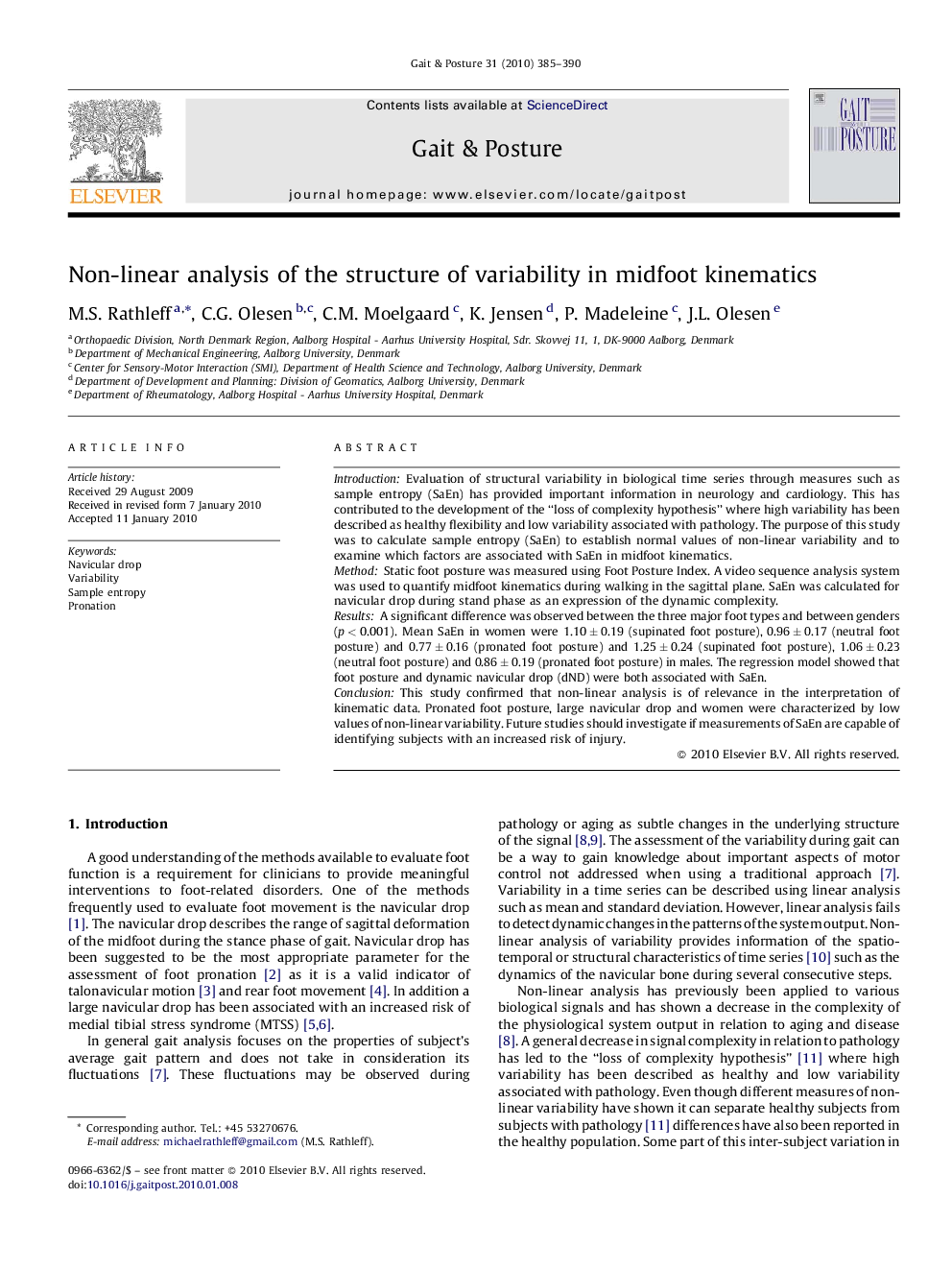| Article ID | Journal | Published Year | Pages | File Type |
|---|---|---|---|---|
| 4056803 | Gait & Posture | 2010 | 6 Pages |
IntroductionEvaluation of structural variability in biological time series through measures such as sample entropy (SaEn) has provided important information in neurology and cardiology. This has contributed to the development of the “loss of complexity hypothesis” where high variability has been described as healthy flexibility and low variability associated with pathology. The purpose of this study was to calculate sample entropy (SaEn) to establish normal values of non-linear variability and to examine which factors are associated with SaEn in midfoot kinematics.MethodStatic foot posture was measured using Foot Posture Index. A video sequence analysis system was used to quantify midfoot kinematics during walking in the sagittal plane. SaEn was calculated for navicular drop during stand phase as an expression of the dynamic complexity.ResultsA significant difference was observed between the three major foot types and between genders (p < 0.001). Mean SaEn in women were 1.10 ± 0.19 (supinated foot posture), 0.96 ± 0.17 (neutral foot posture) and 0.77 ± 0.16 (pronated foot posture) and 1.25 ± 0.24 (supinated foot posture), 1.06 ± 0.23 (neutral foot posture) and 0.86 ± 0.19 (pronated foot posture) in males. The regression model showed that foot posture and dynamic navicular drop (dND) were both associated with SaEn.ConclusionThis study confirmed that non-linear analysis is of relevance in the interpretation of kinematic data. Pronated foot posture, large navicular drop and women were characterized by low values of non-linear variability. Future studies should investigate if measurements of SaEn are capable of identifying subjects with an increased risk of injury.
